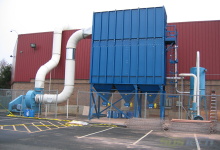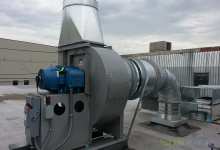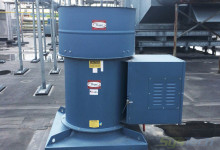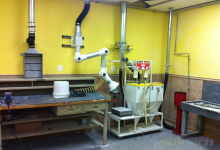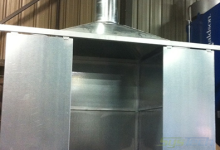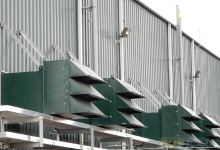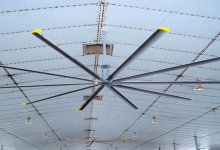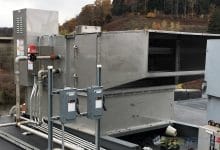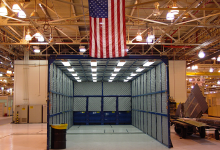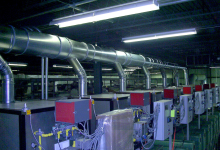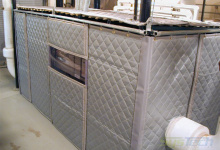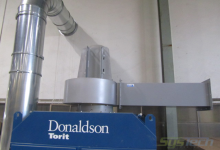Industrial Ventilation Systems
SysTech Design specializes in industrial ventilation applications, the most impactful engineering control method for improving and maintaining the quality of the air in and around an industrial environment. Whether you need an air pollution control system to treat atmospheric discharge or require a definitive plan to improve indoor air quality (IAQ), SysTech will assist you in your air quality control strategy. Project size is never an issue; we’ve handled projects from 100 to 250,000 CFM.
Industrial Ventilation Systems: From Concept to Start-Up
SysTech accepts responsibility for complete projects, from concept to pushing the “start” button. A sole source allows us to complete a project on time, as designed, and in total what the client expects. Recognizing what a client needs and conveying that knowledge to them is important to meeting expectations. Regardless of which industrial ventilation technology is applied, SysTech stresses the need to clearly define the proposed solution and the expected results of that solution before the work begins.
Successfully applied industrial ventilation systems integrate all project phases and components including the initial system layout, the mechanical and electrical equipment, installation services, and start-up, in total. SysTech is a system integrator and has made countless manufacturers and employees safer, facilities quieter, and ambient environments dust-free.
Component Technologies For Industrial Ventilation Systems
When finalizing an industrial ventilation design approach, SysTech can apply single or multiple technology options including:
- Industrial Air Filtration Systems where particulate, oil mist or gaseous pollutants need to be filtered from the airstream or environment.
- Industrial Dust Collection systems are applied for the safe capture, conveying, and cleaning of airborne particulate.
- Industrial Fans & Blowers when mechanical ventilation is required to move the air.
- Explosion Protection when handling combustible dust where the potential for explosion is present.
- Fire Protection for Dust Collectors when handling flammable solids and liquids.
- Industrial Noise Control when interior and exterior noise levels must be met.
- Industrial Vacuum Systems for housekeeping and preventing deposition and “clean-up” of combustible dust.
- Industrial Air Handlers when heating or cooling is required.
- Industrial Air Conveying Systems when hoods, ducts, or fans need to remove particulate away from a work area.
- Air Filter Housings incorporating side-access filter assemblies for MERV-rated air filters, including HEPA and ULPA filters.
- Ventilation of Large Industrial Facilities where large volumes of air need to be moved or tempered.
Two Approaches to Industrial Ventilation System Design
Industrial ventilation controls the level of contaminants within a facility in the form of dust, toxic materials, extreme temperatures, humidity, odor, or explosive gases. When initiating a new system design, it’s important to understand two approaches for your industrial ventilation system, dilution ventilation or source capture (local exhaust). Dilution ventilation reduces the concentration of airborne contaminants by mixing contaminated air with clean or outside air. A building with wall supply fans or exhaust rooftop fans is a typical illustration where the interior workspace air is diluted with fresh outside air. Local exhaust ventilation captures airborne contaminants at or near its source and exhausts them to a safe area. The best example is a dust collection system with a hood, duct system, dust collector, exhaust fan, and stack.
Depending on the processes, work environment, and facility layout, each approach offers differing advantages.
Dilution ventilation systems are typical where large quantities of internal heat, odors, or gases are generated and need to be diluted or exhausted. Applied examples are found at:
- Coal-Fired Power Plant Building
- LNG Compressor Stations
- Utility Transfer Stations
- Chemical processing Rooms
- Warehouse Temperature de-stratification
Ventilation projects using source capture normally include a hood (s) or an enclosure and a duct system in addition to a fan and air pollution control device. Typical systems might be defined by:
- Acid Dip Tank Fume Exhaust System
- Pharmaceutical Laboratory Exhaust with Flexible Extraction Arms
- Weld Smoke Central Dust Collection System
- Mixer/blender Capture and Exhaust System
- Laser Table Exhaust System
- High School Woodshop Dust Collection
Industrial Ventilation Requires Multiple Approaches
When implementing steps to alleviate ventilation issues, we integrate relevant technologies. Often, when fixing one issue, another equally important problem becomes more obvious and needs to be addressed. This most often, includes fire and explosion potential, along with excessive noise. How do we do that?
- Noise Control with exhaust fan silencers, noise blankets, or room enclosures
- Explosion Protection System options including vents, isolation valves, or suppression systems
- Fire Protection Systems
- Vacuum Systems to clean up dust accumulation on floors and horizontal surfaces
- HVLS Recirculation Fans to recovery heat or cool work areas
If you would like to learn more about our industrial ventilation products and systems or would like to discuss your company’s ventilation needs, please give us a call. You may also fill out our Quote Request form and let us know how we may be of service to you.


